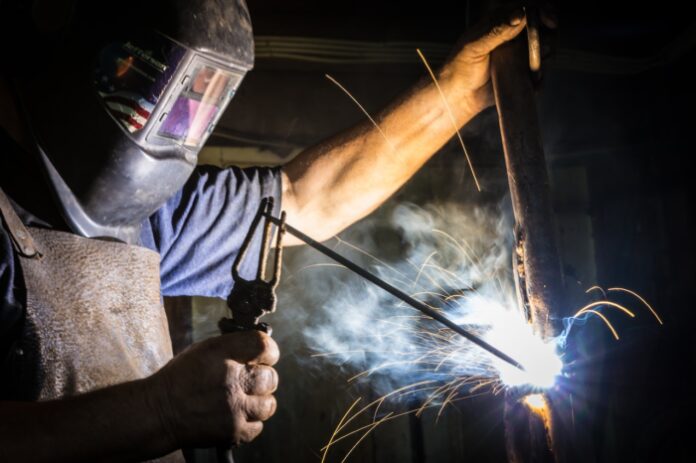Spot welding and stud welding are two of the most popular welding processes. They are used in a wide range of industries, from automotive to manufacturing, aerospace, and more.
While both welding processes can be used to join two metal pieces together effectively, there are many instances where one of them is more suitable than the other.
Understanding the various differences between spot welding and stud welding can help you make an informed choice on which process to use between the two.
Spot Welding and How It Works
Whether you’re a licensed welder or looking to start a welding business, this is one of the welding processes you should know about. Spot welding is a process that uses pressure and electrical current to join two metal pieces together.
The electrical current creates a localized heat source at the spot where the two pieces of metal are joined, allowing the metal to fuse together.
Spot welding is relatively quick and can be used to join metals of different thicknesses. It is also relatively inexpensive, making it ideal for production runs of large pieces.
Stud Welding and How It Works
Stud welding, on the other hand, is a process in which a metal stud is attached to the base material by using an arc of electricity. Similar to how arc welding works, the electrical arc melts the tip of the stud, creating a fusion between the two.
The main difference is that stud welding is often used when attaching a metal stud or fastener to a base material, such as steel or aluminum. It is also ideal for joining metals with different thicknesses and can be used to weld metals of different compositions.
Which Welding Process Should You Use?
When deciding to use spot welding vs. stud welding, there are a few important considerations to make. These may include:
- The composition of the metals;
- Metal thickness;
- The desired weld strength;
- Your budget; and
- Working speed.
Key Considerations When Choosing Stud Vs. Spot Welding
Basically, spot welding is ideal for joining two pieces of metal together quickly, while stud welding is best for attaching a stud or fastener to a base material. Nonetheless, below are a few important considerations you should make before choosing your welding process.
Consider the Application
One of the most important things to think about before making your decision between the two welding processes is the application. This means considering the material you are working with, the strength of the weld needed, and the size of the weld area.
As for the material thickness, spot welding is typically suitable for thin metal sheets, while stud welding is better for thicker metals.
Speed/Efficiency
If your project requires a fast joining process, spot welding may be the best option. It’s a relatively quick process compared to stud welding, making it ideal for production runs of large pieces.
As long as strength and durability are not a major concern, stud welding can be a good option if you need to work quickly to beat certain deadlines.
Weld Strength and Durability
For projects that require a strong, durable bond between two pieces of metal, stud welding would be the better choice. The weld created by stud welding is more reliable and often more durable than the weld created by spot welding.
Additionally, because stud welding creates a deeper weld than spot welding, it may be better suited for projects that require a greater amount of strength.
This makes it a suitable option for sheet metal and structural steel welding applications where anchor studs are used as fasteners to provide a strong, secure joint between construction materials.
Welding Cost
Spot welding is usually less expensive than stud welding, so it can be a good option if you’re working with a tight budget. This is perhaps largely because spot welding doesn’t require specialized equipment.
Safety and the Working Environment
For starters, stud welding produces no sparks or fumes. Additionally, the welded studs are resistant to corrosion, making them ideal for use in areas where there is a risk of contamination. If you’re working in a hazardous environment, stud welding would be a safer option than spot welding.
While both spot welding and stud welding can be used to join two pieces of metal together, each has its own advantages and disadvantages. It is thus important to consider a few things before picking one of them, including the project requirements, desired weld strength, metal type, and the thickness of the metals being joined.
This way, you can make an informed decision about which process to use.
Find a Home-Based Business to Start-Up >>> Hundreds of Business Listings.

















































